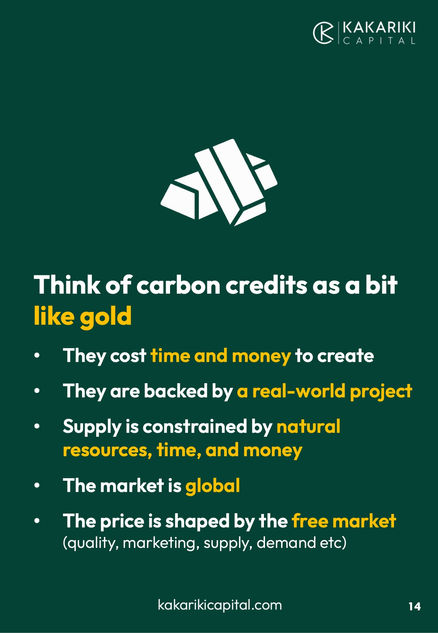What's the difference?
Voluntary vs compliance
Carbon Markets 101
Guidebook
Level: Intermediate
10 minute read
What's in the guidebook
We break down the differences between the compliance and voluntary carbon markets. Which have fundamentally different sources of supply and demand.
Compliance market demand is driven by mandatory purchasing to allow an emitter to emit 1 tonne of carbon dioxide equivalent. Supply comes from emission permits (also called emission units, emission allowances and other terms), which are effectively "permission slips" that allow a company to emit greenhouse gases.
Emission permits are a bit like currency (fiat money):
-
They are "printed" by government
-
They are generally not backed by an underlying asset or projects
-
Supply is dictated by the government (infinite supply)
-
Price is influenced by government (controlling supply, price control mechanisms etc)
Voluntary market demand is driven by voluntary purchasing from companies seeking to compensate for their environmental impact (as part of a net-zero or decarbonisation plan). Supply is from carbon credits, a financial instrument signifying the avoidance or removal of 1 tonne of carbon dioxide equivalent.
Carbon credits are a bit like gold:
-
They cost time and money to create
-
They are backed by a real-world project that avoids or removes CO2
-
Supply is constrained by natural resources, time and money (finite supply)
-
The price is shaped only by the free market (supply, demand, quality, marketing etc)
This guidebook will help you to understand how the two markets work, how they overlap and the core differences between the two. Including examples from China, Europe and Australia.
Browse the guidebook
Click on the arrow to scroll through the guidebook

























